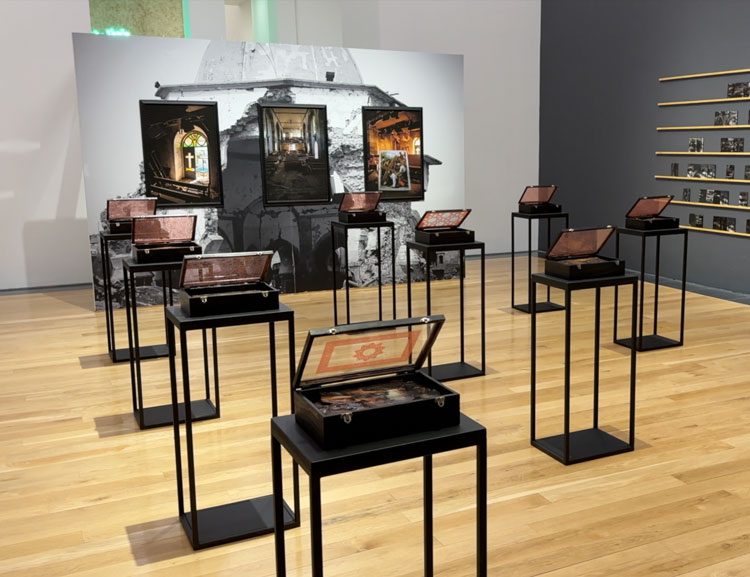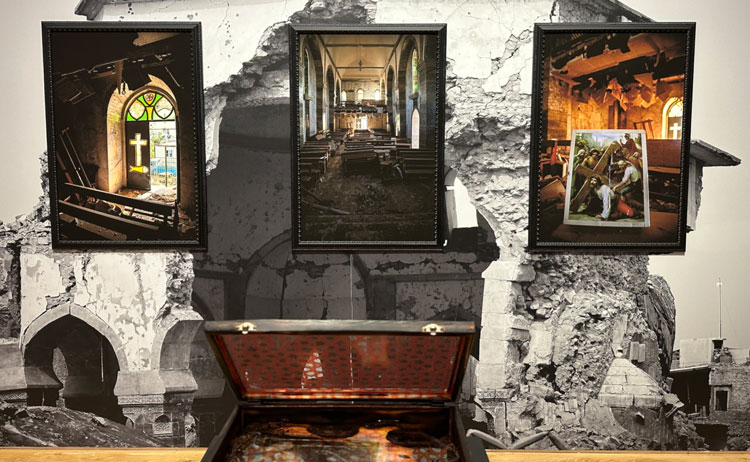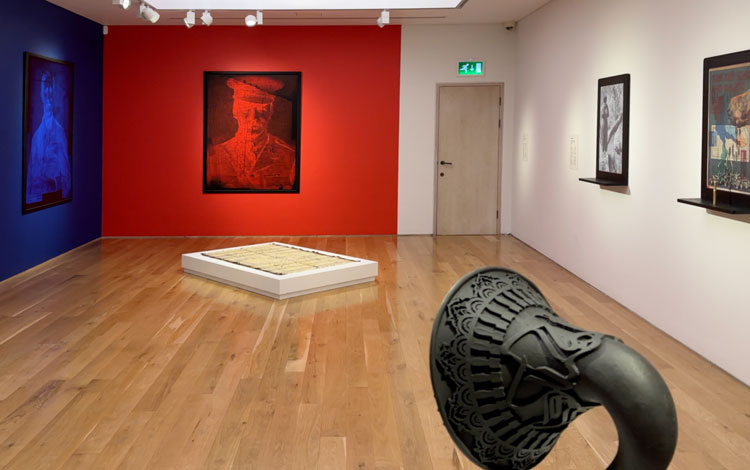Spread across two rooms in the National Museum Cardiff, Anwar’s installation is haunted by the soundtrack of early-20th-century jingoistic songs and news broadcasts, most of which are English but some of which are from his home regions of Kurdistan and Iraq. The soundscape emanates from a replica of an early-20th-century gramophone, its “horn” cast in metal, painted black and embellished with traditional decorative motifs of the Middle East. The seemingly cheerful refrain of Pack Up Your Troubles in Your Old Kit Bag and Smile, Smile, Smile switches to a more sinister mantra as you interrogate the surrounding materials. These include striking portraits of two aristocrats, the British diplomat Sir Mark Sykes and his French counterpart François Georges-Picot. During the first world war, the pair presided over the carve-up of territory in the Middle East known as the Sykes-Picot agreement. In front of these inflated portraits – one coloured in the exact blue of the union jack, the other in the exact red taken from the French flag – is a prayer mat, whose textile patterns reveal the territorial carve-up, while the room next door bears witness to some of the horrendous violence that has followed.

Rushdi Anwar, installation view, Artes Mundi 10, National Museum Cardiff, 2023. Photo: Martin Kennedy.
We Have Found in the Ashes What We Lost in the Fire (2018) consists of 12 decorated boxes, containing burnt photographs, taken by Anwar on a visit to a church destroyed by Isis. The lids of the boxes are embossed with delicate Islamic patterns, taken from the period when the Muslims occupied Spain (711-1492).

Rushdi Anwar, installation view, Artes Mundi 10, National Museum Cardiff, 2023. Photo: Martin Kennedy.
Behind these there are three large photographs of the ruins of the Al-Nabi Yunus mosque in Mosul that was used as an HQ by Isis during its occupation, and later destroyed. These are overlaid with photographs representing the many religions outlawed by Isis and its followers. Even more chilling is the adjacent display of photographs of Halabja, Anwar’s hometown, which the artist has treated with soot to evoke the chemical attack in which thousands of civilians died, including Anwar’s friends and family.

Rushdi Anwar, installation view, Artes Mundi 10, National Museum Cardiff, 2023. Photo: Martin Kennedy.
The work on display provides a window on to Anwar’s preoccupations, drawing from his art historical studies as well as his experience as a person displaced from his homeland by war and his sensitivities to the violence and degradation that divisive ideologies and colonialism can wreak.
Anwar has a PhD in fine art from RMIT University, Melbourne, and is a senior lecturer in the painting department at the faculty of fine arts at Chiang Mai University. He lives between Melbourne and Chiang Mai. Recent notable exhibitions include the Sharjah Biennial (2023).
Rushdi Anwar: Artes Mundi 10
National Museum Cardiff
20 October 2023 – 25 February 2024
Interview by VERONICA SIMPSON
Filmed by MARTIN KENNEDY